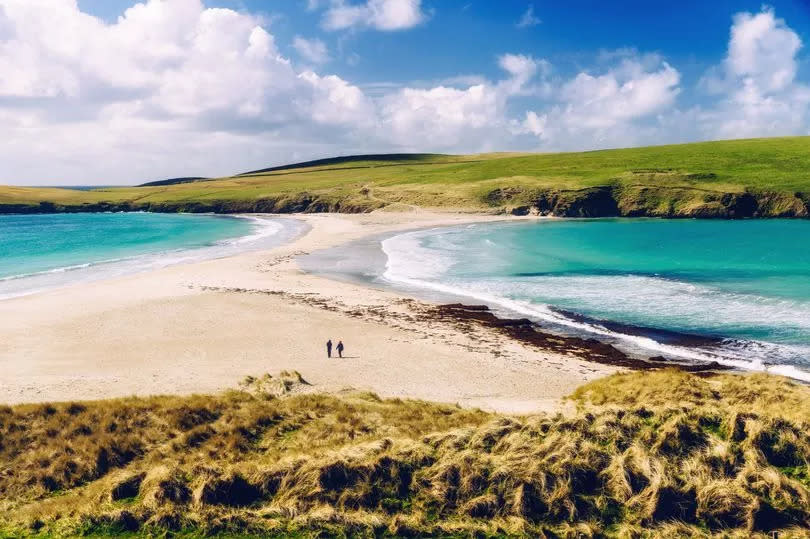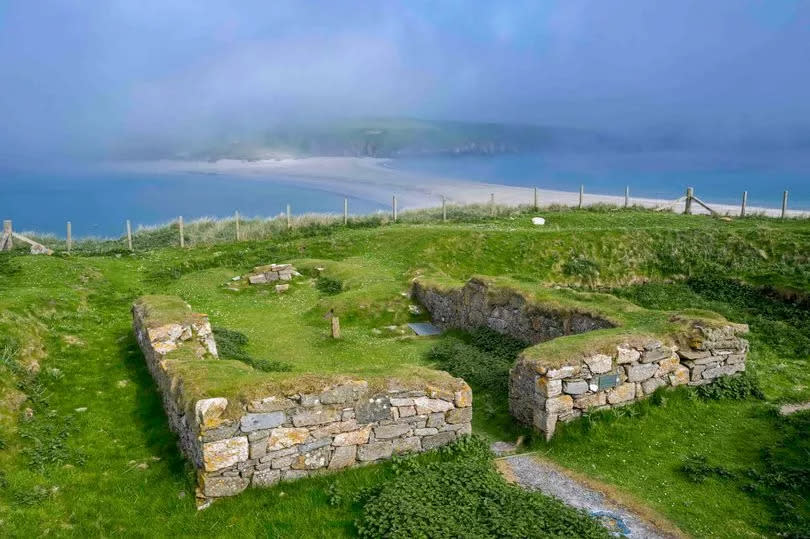Pretty island with rich history is a prime location for the northern lights

The northern lights, a spectacle rarely seen in the UK, made an appearance earlier this year. However, city dwellers and those residing in areas with high light pollution missed out on this extraordinary sight.
Fear not, there are still opportunities to witness the awe-inspiring aurora borealis within the UK, which could also serve as an ideal staycation destination.
St Ninian's Isle, a tied island connected to Shetland in Scotland by a tombolo, is one of the prime locations to view the northern lights in the UK. Its remote location and lack of inhabitants ensure minimal light pollution.
The status of St Ninian's as an island or peninsula has been a topic of debate due to its tombolo occasionally being submerged by the sea. Regardless of whether you reach it by foot or boat, it remains a breathtakingly beautiful place.
The last inhabitants of St Ninian's left in 1796, and the closest village now is Bigton, situated on Shetland's mainland, reports the Mirror.
Despite being uninhabited for over two centuries, the island was not always deserted. Archaeological excavations have unearthed Neolithic graves.

Ruins of a 12th-century chapel dedicated to Saint Ninian of Galloway, the Patron Saint of the Shetland Islands and the namesake of St Ninian's Isle, can also be found on the island.
Further archaeological digs have revealed that this wasn't the first chapel on the site, with remnants of a pre-Norse chapel's wall being discovered.

On 4 July 1958, a collection of silver metalwork from the Early Medieval period was unearthed during an archaeological dig. This is thought to have been a family's collection, likely concealed within the church for protection.
The fate of St Ninian's treasure's original owners remains a mystery, but the artefacts are currently exhibited in the National Museum of Scotland.

 Yahoo News
Yahoo News 
